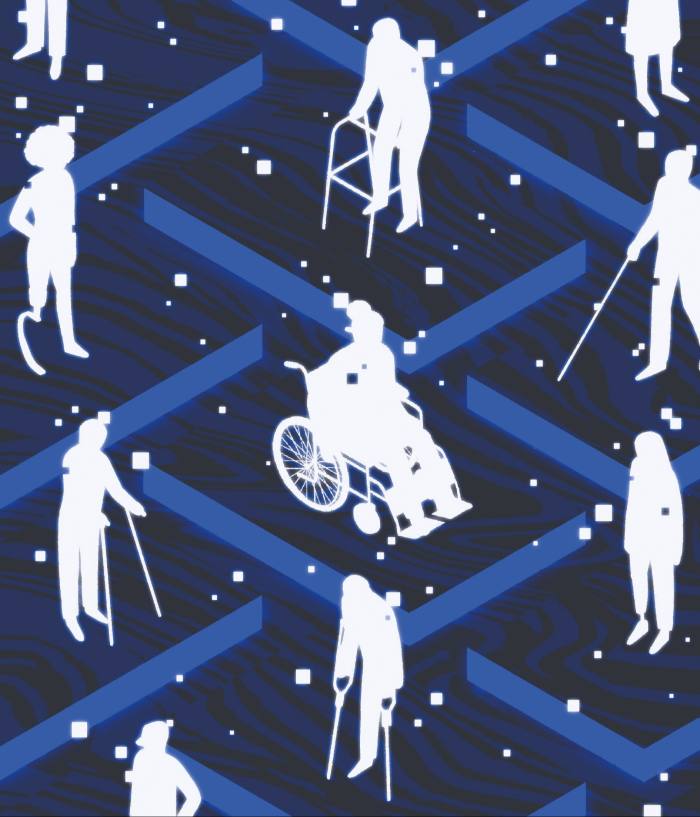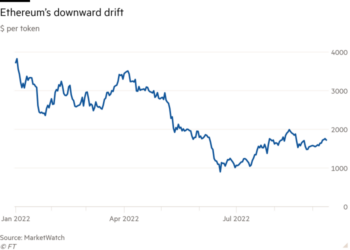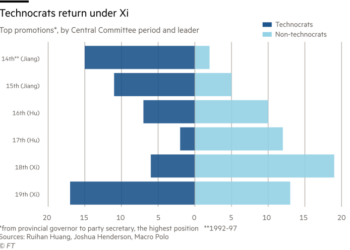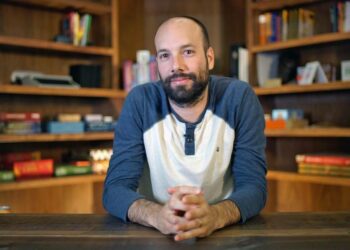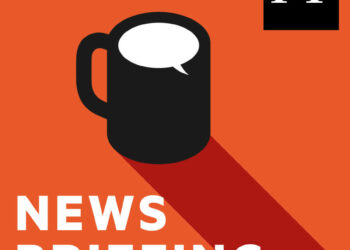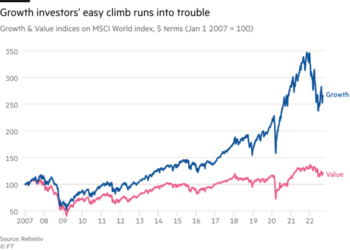I’m scrolling through Instagram again, because what else is there to do? It is the beginning of the end of the third lockdown and, while many of my friends are getting out and about, I am still stuck at home. I’m not exactly lonely, but I do feel like I’m living in a parallel universe. Instagram is a salve, because here there are so many others like me, disabled people who have been left to keep ourselves safe — and alive — even as others seem to have decided the pandemic is over.
The isolation and fear in the stories people share fuel my anger at the situation. Counter-intuitively, they also make me feel better. They make me feel like there are people, hunkered down in homes around the world, who also exist in this parallel twilight world. And through the mysterious workings of a social-media algorithm, they are all within reach, to keep each other company as we work out how the hell to exist in this fragile new normal.
I’d like you to imagine that you do not know a single person who looks, sounds, moves, lives like you. Do you feel unmoored? Alone? Like a freakish flaw in this society you do not belong in? Probably.
Now imagine that you are also 14. Every hormone-induced thought in your brain is screaming at you that you must fit in. Fitting in, for teenagers, is like eating for the rest of us: life-sustaining stuff. And yet in this situation, there is no change you can make — no haircut, no new top, no digression in music taste — that will bring you within sight of mirroring your peers. You are, as I found myself, the only disabled child at your school. Fitting in, with your wheelchair and carer and speech impediment, is not an option.
The results of this are varied and variously bad. I wasn’t invited to birthday parties, obviously, but I was also the one left without a partner for science experiments. PE was a unique kind of punishment. The other girls would gossip and laugh until I approached, and then a hushed awkwardness would fall until I took the cue to go away. This went on, sometimes better, sometimes worse, until I finally — finally — left for university.
It was in these circumstances that I tried to work out what it meant to be a disabled person. I honestly had no idea. I had no frame of reference, I never saw disabled people on TV or in magazines or anywhere in my own life. I had to extrapolate from what I could see, and from there it was impossible not to conclude that being disabled meant being lonely, isolated and miserable. That there was, unarguably, something wrong with me. That disability itself was a bad, bad thing.
I was able to believe these things mostly because there was no one else to tell me otherwise, no one to show that a disabled life could be a good one. I lived in an entirely “abled” world. Not just one that was largely physically inaccessible to me, but one where my definitions of success, happiness and a life well lived were shaped solely by the nondisabled people and culture around me. And it was this lack of an alternative vision of the future that was the highest cost of being the only one.
The thing about being 14 is that you think you have grown up, which leads you to believe that this is how things are always going to be. The cast is set. I saw no chance that friendship and belonging, community and happiness, might be out there waiting for me. Whenever an adult suggested that things would get better, I pointed to what I considered overwhelming evidence that, as far as I could tell, things just kept getting worse.
And then, of course, it did get better. It nearly always does. During my A-levels, I finally found a friend who understood, and then at university found a few more. I remember trying desperately not to beam at random wheelchair users on campus, so happy was I to see them. It is hard to describe the effect of no longer being the only one. It was akin to coming home from a long trip or the moment you leave a job interview and feel your tensed shoulders fall, except the feeling of relief carried on and on. I could scarcely believe my luck — or believe that this had been out there the whole time, if only I’d been able to find it.
Still, while these friends made me happier, they did little for my self-perception or my understanding of my place in the world. Looking back, I can see that I hadn’t yet crossed the threshold from being a disabled person with disabled friends to becoming part of the disability community. It might sound like semantics, but the difference is crucial.
A few disabled friends can make you feel less like a fish out of water and can commiserate when your wheelchair breaks down. But they can’t teach you about systematic ableism. They can’t model a path to advocacy that is vocal yet not draining. They can’t open up disability history or show you that disabled people have their own culture, as vibrant and interesting and varied as any other, and that you belong to it in a way you have never dreamed of belonging. For this, I would need a wide-angle lens. And like many disabled people, I found one online.
These days, we have grown sceptical of social media’s claims to connect people. We are all too familiar with its powers to radicalise, isolate and divide. But for disabled people, the internet allows us to bypass some of the things that keep us apart: inaccessible transport, a lack of appropriate care, pain, fatigue. We can show up mostly unimpeded and find others like us who we would never meet in the concrete “real world’’. A digital web of community stretches out, bringing more and more people — with experiences at once diverse and familiar — into the fold. Even if we could all get together, you’d never find a pub big enough to hold all the disabled people I’ve met on Twitter, Instagram and Facebook.
The community serves many purposes. First and foremost, it is a safe space: the only place where we can share experiences without having to endlessly explain and where those experiences are believed, no questions asked. Then there is the support. When you’ve encountered yet another ableist or been stuck because of yet another broken lift, there are people who will share your anger, understand your exhaustion and cheer you up with memes. And, lastly, the solidarity. Hell has no fury like disabled people patronised.
I witnessed this myself last year when a dating agency turned me away after discovering I was a wheelchair user. I tweeted the (frankly surreal) email exchange mostly to show nondisabled people what depths ableism was still plumbing in 2021, but by the end of the day it was the overwhelming response of my community that had stemmed my tears.
Hundreds of people got in touch, offering words of comfort but, more importantly, confirming that they shared my outrage. Some of the kindest messages came from famous disabled people — I fangirled hard when the presenter Sophie Morgan and actress Ruth Madeley appeared in my notifications — but some of the most touching came from ordinary disabled people who just wanted to check I was OK. Of course, I turned to my friends, disabled and not, but there was immense reassurance in the knowledge that a whole world of people had my back simply because, if fortunes had been reversed, I would have had theirs.
The real power of the disability community, however, comes not in the big rally-round but in the slow accumulation of knowledge that accrues from bearing witness to each other’s lives. From meeting new people with a whole range of disabilities, I’ve learnt the importance of including the widest variety of access needs when I’m asked to give advice on accessibility. I’m now able to talk about hearing loops and good lighting alongside step-free routes and disabled loos.
With its endless campaigning and radically honest tweets, the community has made me a better advocate, teaching me that I don’t have to just put up with ableism and inaccessibility and that I am well within my rights to speak out when I know something is wrong. It is easier to say something when you know that your head won’t be the only one popping up above the parapet. I just have to check Facebook to see that someone has picked up the torch.
The community has also taught me about myself, from practical things like how to manage fatigue to big important lessons about how early ostracism shaped how I see myself. And crucially, being immersed in the community finally showed me how to apply the “social model” of disability — a theory I understood in principle if not in practice — to my everyday life. Put simply, the theory says that people with physical and mental impairments are disabled by society. For example, I am only unable to access the Tube because Transport for London has steadfastly failed to make large swaths of it step free. Like so many other disabled people before me, being introduced to the social model was like being handed a key — to myself but also to the possibility of a more inclusive future.
Understanding the societal forces that shape me has allowed me to exercise some self‑compassion, to say that sometimes my pain and anxiety are natural consequences of trying to exist in a world that continually disables me. It has also taught me that I am allowed to say no: no to pretending I haven’t noticed you’re talking to me as if I’m five, no to working so much I am ill, no to that party where I can’t go to the loo. What a revelation. And when courage fails me, I like to believe that every time I put my foot down, another disabled person has one less battle to fight. It’s enough to propel me to stifle my fear of making a fuss, open my mouth and speak.
Imagine if I’d had all of this around me while sitting alone in the school common room. If I had the power to tell my teenage self just one thing, it would be to use her idle Twitter account to find other disabled people. I hope today’s young disabled people get to find their tribe sooner than I did. If so, maybe social media isn’t so bad after all.
Lucy Webster is a writer, political journalist and disability advocate
Follow @FTMag on Twitter to find out about our latest stories first


